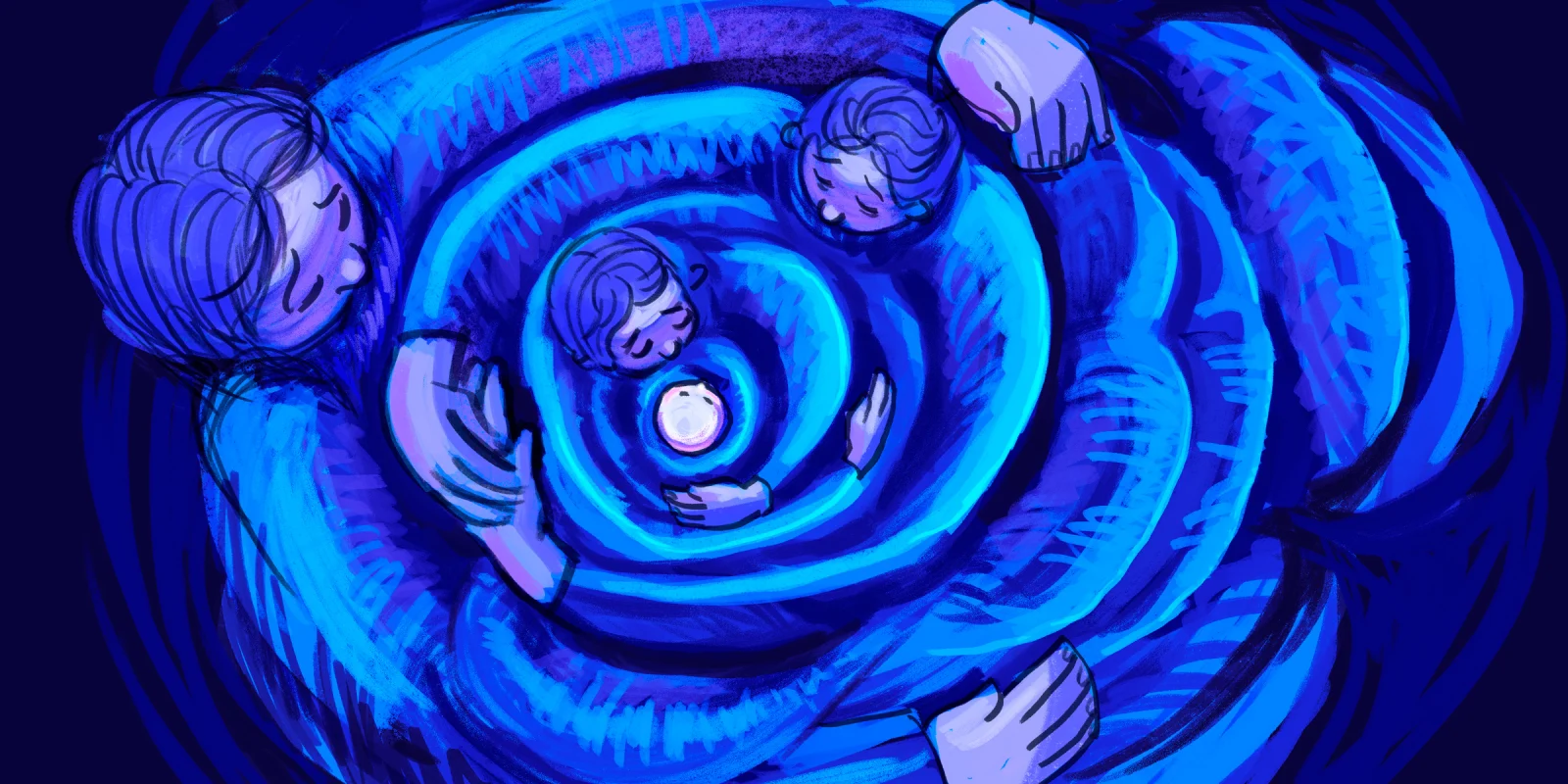I gently knocked on the door for my pre-rounds examination, my goggles familiarly fogging from the tears that welled whenever I stepped into his vicinity. I gripped my stethoscope, ready to listen to his characteristic systolic murmur and diminished breath sounds, and pulled back the patterned curtain.
Henry’s father was curled up tightly next to him in the small hospital bed, their arms intertwined with his nasal cannula and gastrostomy tube and each other. The scene couldn’t be described as anything less than heartbreaking, as he lived out his last days of life with his loving family by his side. He had a devastating form of Wilson’s disease that rendered his liver incapable of generating clotting products, and given his underlying gastrointestinal bleed, was receiving entirely comfort care. Given the inevitability of his prognosis, our team had partnered closely with his family to understand their goals of care for him. They wished for him to be surrounded by all of those he loved dearly — including the nurses that knew his favorite songs to dance to, and the medical assistants that always knew which toy he was gesturing toward — and to be in as little pain as possible.
As we carefully considered each medical intervention in the context of these goals, I learned what it means to truly provide comfort care: I switched him to a regular nasal cannula once I learned that high-flow is louder and has larger prongs in comparison; I transitioned his nasal vasoconstrictor medication to be as needed so we wouldn’t have to disrupt his karaoke sessions; and I thought about the tight squeeze of the blood pressure cuff, and wondered if acquiring his vitals every four hours was really necessary.
While seemingly minute changes, we must contextualize these in the knowledge that the overwhelming majority of our pediatric patients will recover from their illnesses with appropriate medical care. As such, we typically maximize our health care interventions, fueled by the confidence that we will most certainly redirect our sick patients toward the path for recovery. Therefore, transitioning to comfort care for our terminally ill patients may initially feel discordant to our core beliefs as pediatricians. This transition requires even the most experienced of clinicians to converse, deliberate, and actively plan in order to provide our young patients with the softest landing possible. It was my experience caring for this dying 4-year-old that taught me to critically evaluate each component of the care I provide to all of my patients, and ensure that every intervention aligns with the family and team’s goals.
José was our 12-day-old NICU transfer, with sign-out detailing a recent MRI that demonstrated a large intracranial teratoma and an EEG that witnessed non-convulsive status epilepticus. His first-time parents were equally attentive in mastering how to change his diapers and bathe him as they were in learning how to place an NG tube and position a nasal cannula in his tiny nose. We celebrated small victories alongside his family, cheering when we discovered the medication that inhibited his myoclonic jerks and when his parents had successfully administered his complicated medication regimen for the first time. When it was time to discharge him home on hospice care, his mom excitedly wore a sweatshirt proudly displaying “MAMA” and his beaming dad expertly balanced a diaper bag and car seat as they entered his hospital room for the last time. It was my experience caring for this child and his family that reminded me of the importance of celebrating life’s moments — even those that may be considered mundane or routine — as we never know what is or isn’t to come in a child’s life.
Lilah was barely three months old, yet already had a favorite red blanket when it came time to swaddle her for her afternoon nap. Her jumble of symptoms — a jaundiced appearance, intermittent tremors, hypoglycemia, and hyperammonemia — challenged the mental models of even the most experienced physicians. Toward the end of the week, the fellow walked solemnly into our team’s workroom, confirming our worst fears for our mystery of a patient. Due to the findings of a genetics screen, Lilah was diagnosed with an extremely rare metabolic disorder with a devastatingly poor prognosis.
I attended the family meeting and watched the attending physician gently break the news of their daughter’s rare deficiency, the parents’ hopes crumbling. They turned to hold each other, crying over what their and their daughter’s future did not hold. The attending expertly navigated the situation, somehow able to provide the family space to process while simultaneously being there wholeheartedly in this profound moment of grief. She toed the fine line of providing optimism while remaining firmly grounded in the reality of the situation, imparting that the team would work hard to identify a solution in the form of a clinical trial or possible organ transplant. In assuming that responsibility, she sought to gain the family’s trust in the care of their precious daughter. It was my experience caring for this child that illuminated the immense honor we have as physicians to care for our patients and their families at their most vulnerable, and how our actions must continually demonstrate recognition of this privilege.
I am learning how to be in these moments — how to care for a child that will never grow up.
I am learning what it means to actively provide comfort care, to not just a patient but their family. To develop strong patient-family relationships in which we celebrate and grieve life’s moments together. To grant space to families within their cramped hospital rooms to fathom life’s toughest dealings while still physically and emotionally being there to process with them. To earn the trust of a family. To commemorate the underlying value of a child’s life, even if it is destined to end early.
I have learned that loving a child with a terminal illness is one of the most selfless, painful experiences a family can have. Given that children are sometimes too young to understand, parents often bear the burden of both the understanding and expectation of a shortened life. Yet, the families love so wholeheartedly, committed to providing as much of a childhood as is possible, despite the grief that has already begun to loom over their heart.
As pediatricians, caring for a child who is going to die means partnering with their family to make the most of every moment they have. It means heeding the importance of musical therapy. Ensuring that their wheelchair’s mechanics are accessible for their favorite park. Coordinating with their dietician to guarantee bites of their favorite ice cream. Spending time at their bedside and reading them "The Very Hungry Caterpillar".
Sometimes, it means questioning the frequency of vitals. Other times, it means experiencing the full emotional spectrum when processing the inevitable loss of a young soul. But it always means optimizing their time with their loved ones, and sincerely learning how to best support and celebrate them and their families for the rest of their young lives.
How do you approach terminally ill children versus terminally ill adults?
Dr. Sahr Yazdani is a pediatric resident physician in Philadelphia, Pennsylvania. She enjoys reading, listening to Pakistani music, and trying out new Thai restaurants with her friends and family! Dr. Yazdani is a 2022–2023 Doximity Op-Med Fellow.
All names and identifying information have been modified to protect patient privacy.
Illustration by Jennifer Bogartz







